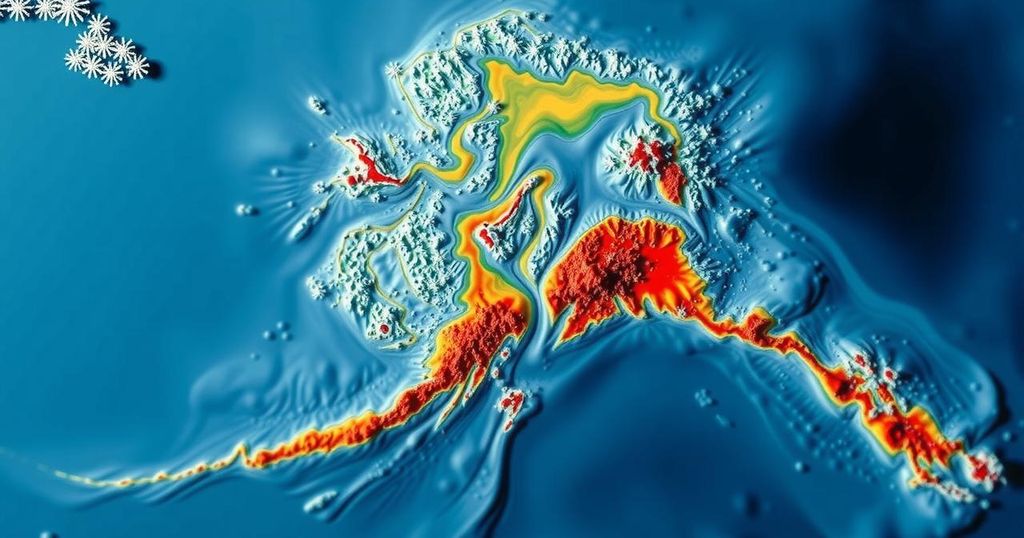Recent Earthquake Activity Near Valdez, Alaska: November 2024 Summary

A magnitude 1.3 earthquake occurred 35 miles NW of Valdez, Alaska, on November 27, 2024, at a depth of 67.3 miles. This event remains unreviewed by seismologists and highlights the ongoing tectonic activity in Southern Alaska, noted for its historical seismic events.
On November 27, 2024, at 07:56 AM AKST, a moderate earthquake measuring 1.3 in magnitude was recorded 35 miles northwest of Valdez, Alaska. This seismic event occurred at a considerable depth of 67.3 miles (109 km) and its precise details remained unverified by a seismologist at the time of reporting. It is notable for being positioned near several key locations including Tatitlek and Palmer, thereby highlighting the geological activity characterizing Southern Alaska.
The tectonic setting of Southcentral Alaska is complex and largely shaped by the interactions between the Pacific and North American tectonic plates. The region is particularly known for earthquakes due to the presence of the megathrust fault responsible for the 1964 M9.2 Great Alaska Earthquake, which is among the largest recorded globally. Intermediate-depth seismicity, typically occurring below 20 miles, is linked to activities within the Wadati-Benioff Zone, a region indicative of plate subduction.
Furthermore, crustal seismicity in Southern Alaska can be attributed to various geological structures including the Cook Inlet basin and the Castle Mountain Fault. The infrastructure and communities in this region are frequently subjected to seismic evaluations due to past earthquakes that have resulted in significant damage, notably the 1933 M6.9 earthquake that impacted Anchorage, and later events such as the 1984 Sutton Earthquake.
As this latest magnitude 1.3 earthquake has not undergone rigorous scrutiny by specialized seismologists, it prompts questions regarding the local tectonic movement and contributes to an ongoing dataset used to monitor seismic activity. The most recent significant events, including the 2016 and 2018 earthquakes, have illustrated the direct impact of such geological phenomena on human settlements and ecological systems throughout the area.
Southern Alaska is a seismically active region primarily due to the interaction between the Pacific and North American tectonic plates. This interaction gives rise to a variety of earthquakes, including those occurring at both shallow and intermediate depths across different tectonic features. The area has a historical precedent of substantial seismic activity, which has led to the establishment of monitoring protocols by institutions such as the Alaska Earthquake Center. Understanding the tectonic setting is vital for disaster preparedness and response planning in this geologically volatile region.
In summary, the recent magnitude 1.3 earthquake near Valdez, Alaska, underscores the ongoing seismic activity prevalent in Southern Alaska. The tectonic dynamics due to the Pacific and North American plates create a diverse range of earthquake scenarios, significantly influencing the safety and infrastructure within the region. Historical incidents serve as reminders of the potential consequences associated with major seismic events. Continued monitoring and research are essential for enhancing community preparedness and resilience.
Original Source: earthquake.alaska.edu







